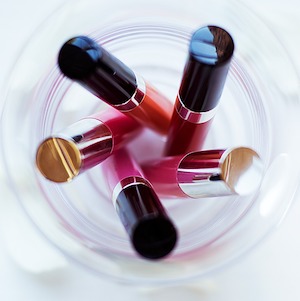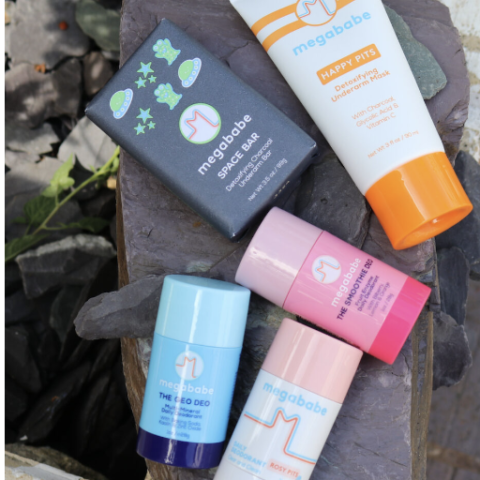Fashion and Art Collide
By Jo Phillips
At London Fashion Week you are just as likely to find Tracey Emin, the poster girl of Brit Art, or Peter Blake, the Godfather of Pop Art, sitting front row as you are a buyer from Browns or a twittering blogger. The worlds of fashion and art have long been blurred along the borders offering a fertile relationship of inspiration, collaboration and dialogue.
At the dawning of the 20th century French fashion couturier Paul Poiret was inspired by dance and theatre, specifically the exotic Ballets Russes. He collaborated with artists from Raoul Dufy to Georges Lepape. Informed by the obsessions of the day, from Orientalism to Primitivism, the designer stitched ideas into the garments pertaining to modernism, freedom and ethnicity.
While economic downturns and hard times can often pressurise the populace to conform, they have also provoked immense creativity and imagination. As artists and designers already tend to live on the fringes of society, outside the norm, so when others are panicked into paralysis they throw off the straitjacket of convention and seize the opportunity to experiment. There have been key moments throughout the twentieth century where the threat of war or the reality of fiscal fiasco has encouraged a bandying together of creative types. It is at times like these that the original thinker will often believe they have nothing left to lose.
Following the Wall Street Crash of 1929 fashion designer Elsa Schiaparelli was part of a creative milieu in pre-war Europe. Schiaparelli collaborated with Salvador Dali and Jean Cocteau who was central to the Parisian demimonde that included Picasso, Dietrich and Piaf. Cocteau also worked with Schiaparelli’s archrival Coco Chanel. Surrealist art has proved a constant source of inspiration in fashion be it a leaf shoe by Manolo Blahnik or an amusing hat by Stephen Jones.
In the twilight world of New York in the 1960s and ‘70s another group of artists and designers, prompted by the availability of low rents, took advantage of vast loft spaces that became the playground for a twenty-four hour lifestyle that mingled art and culture, fashion and music. At its centre was Andy Warhol’s Factory studio. Warhol even published his own magazine Andy Warhol’s Interview that documented the fabulous lifestyles of New York’s in-crowd, who became the focus of artworks. The artist created dresses patterned with Brillo and Campbell’s soup packaging prints and a series of cut-up collage dresses, which in turn were a recent inspiration for Michael van der Ham.
In the late 1970s with industrial unrest, high inflation, doles queues and Margaret Thatcher waiting in the wings, London’s artist community went feral. Abandoned Victorian warehouses on the banks of the Thames became an artistic refuge for the likes of Derek Jarman and sculptor Andrew Logan. Out of this community emerged fashion designers Bill Gibb and Zandra Rhodes and a new youthful group that included filmmaker John Maybury and designers Bodymap who were just emerging from art school and living in shared squats around the capital.
The British art school system is the envy of the world spearheaded by two institutions, which have turned out an endless roll call of celebrated fashion designers. St Martin’s School of Art (now Central Saint Martins) and the Royal College of Art have constructed between them a tradition of self-expression and theoretical conceptualism combined with technical nous. Graduates are a peculiar breed with a genuine curiosity beyond the buttons and bows, as intellectually curious and provocative as their Brit Art contemporaries.
Artist Grayson Perry, as well known for his flamboyant transvestitism as for his confrontational ceramics, collaborates annually with the textile students at Central Saint Martins on a special project. The students design frocks for his alter ego Claire, with wonderfully vibrant and often X-rated results. Louis Vuitton was a co-sponsor for Grayson Perry’s exhibition at the British Museum and in return Perry redesigned their trademark traveling trunk. Perry emerged out of the maelstrom that was 1980s club culture, a scene that naively mixed media, art, fashion, film and music and which included the iconoclast Leigh Bowery, who was the product of a British fashion system that melds street life with nightlife, art school with artisan. Bowery designed outfits that pushed the boundaries of clothing, good taste and sexuality, which he paraded on London’s nightclub scene, the dancefloor becoming his catwalk. As Bowery gained confidence (something our fashion mavericks have in spades) his look became more exotic, provocative and complex. He became his own walking work of art and was welcomed by the art world, appearing for a week in 1988 as a living sculpture in the window of the Anthony D’Offey gallery. Later he became an inspiration for artist Lucien Freud, father of fashion designer Bella.
Model Kate Moss is another famed sitter of Freud. As many beauties before her, Moss has been the focus of endless artistic interpretations from the naïve portrait by Stella Vine to the solid gold statue by Marc Quinn. The supermodels enigmatic persona (she is rarely seen to speak or give interviews) makes her the ideal candidate for artists who can project their visions upon her. Moss was also captured in ghostly holographic film footage for Alexander McQueen, who, of course, was one of the most celebrated practitioners of the fashion show as art event, constructing shows that were awe inspiring yet combative; an exquisite assault. Hussein Chalayan’s catwalk presentations are equally concerned with politics, nationality and identity as with hemlines and tailoring.
The Young British Artists who became prominent in the 1990s embraced fast-fashion’s throwaway ethos and were wildly entrepreneurial and self-promoting, partying outrageously with the fashion pack.
Tracey Emin questions the value of everyday objects and how they can become imbued with meaning. This was the narrative for a short film called, ‘Sometimes The Dress Is Worth More Money Than The Money’ that featured the artist wearing a wedding dress covered in bank notes (a Greek tradition). Emin, who has modelled for Vivienne Westwood, uses embroidery and appliqué to convey intense emotions, painful memories and an underlying introspection and self-analysis. Artist Cindy Sherman has collaborated with Marc Jacobs and Comme des Garçons. Her work explores identity and appearance and underlines the modern pre-occupation with two obsessions: self and shopping. We have become what we wear.
Throughout the years there have been many more examples of designers and artists who have collaborated, inspired or influenced in some shape or form. Whether blatant, referential or allusive this exchange of ideas continues to be a work (of art) in progress.
From an essay that appeared as the foreword for FASHION AND ART COLLUSION, published by Booth-Clibborn Editions, 2012
© Fondation Pierre Bergé – Yves Saint Laurent – by Guy Marineau
Tom Ford A/W 13 courtesy of Tom Ford
Zandra Rhodes Paiting – Glass and Mirror by Andrew Logan and Zandra Rhodes photograph Zandra Rhodes
“Miro, Miro on the wall” acrylic on canvas by Duggie Fields




